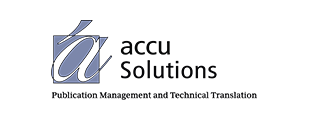Provisioning
Provisioning is the process of ensuring that a system has the necessary resources, such as spare parts, tools, and technical documentation, to support it throughout its life cycle. The S2000M standard provides a framework for implementing provisioning practices in the aerospace and defense industries.

At Accu, we follow the S2000M standard to implement provisioning for our clients’ systems. The process involves several steps, including:
Step 1: Identify the system and its components.
Step 2: Develop a bill of material (BOM) for each component.
Step 3: Determine the support requirements for each component.
Step 4: Develop a provisioning strategy.
Step 5: Develop a provisioning list.
Step 6: Implement the provisioning program.
Step 7: Monitor and evaluate the effectiveness of the provisioning program.
By following the S2000M standard, we can ensure that our clients’ systems have the necessary resources to support them throughout their life cycle. This results in several benefits, such as:
1. Improved system availability: By ensuring that the system has the necessary resources, such as spare parts and technical documentation, the system can be maintained and repaired more quickly, reducing downtime and improving system availability.
2. Reduced maintenance costs: By ensuring that the system has the necessary resources, maintenance can be performed more efficiently, reducing the cost of maintenance.
3. Improved system reliability: By ensuring that the system has the necessary resources, potential issues can be identified and addressed before they become major problems, improving the reliability of the system.
In conclusion, provisioning is a critical aspect of ensuring the supportability of complex systems. By following the S2000M standard, Accu can ensure that our clients’ systems have the necessary resources to support them throughout their life cycle, resulting in improved system availability, reduced maintenance costs, and improved system reliability.
Step 2: Develop a bill of material (BOM) for each component.
Step 3: Determine the support requirements for each component.
Step 4: Develop a provisioning strategy.
Step 5: Develop a provisioning list.
Step 6: Implement the provisioning program.
Step 7: Monitor and evaluate the effectiveness of the provisioning program.
2. Reduced maintenance costs: By ensuring that the system has the necessary resources, maintenance can be performed more efficiently, reducing the cost of maintenance.
3. Improved system reliability: By ensuring that the system has the necessary resources, potential issues can be identified and addressed before they become major problems, improving the reliability of the system.

